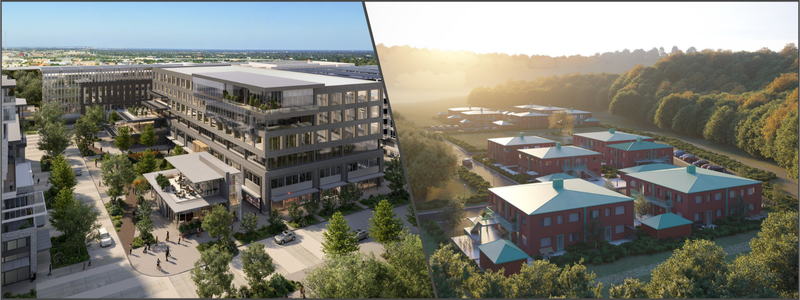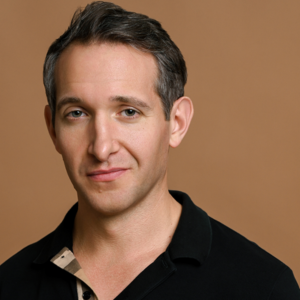Today’s post talks about backdrop photos or full 3D aerial view rendering options to identify the better choice for architects. An ever-increasing number of architects today are making the most out of 3D aerial view renderings, both animated and static, to spice up their architectural visualization projects. 3D aerial rendering services are enjoying a higher demand because these renderings are informative, captivating, and striking.
But how are they even made in the first place? What actually goes into creating aerial view renderings? Aside from the 3D models of the main structure, a large-scale detailed backdrop photo is also required to show its immediate surroundings.
There are two popular methods you can choose from to produce such backdrops. These are the use of drone photography and 3D scenes. The methods have their own sets of strengths and weaknesses that can make or break the final CGI’s visual impact. Familiarizing their upsides and downsides will affect your project and its results.
Cad Crowd has worked with both general design firms and the aerospace industry (NASA, JPL) and understands how each industry uses varied levels of aerial views for different purposes. In this article, however, we’ll take those insights and focus on their use for architects and architecture firms.
 Table of contents
Table of contents
RELATED: How can 3D architectural aerial renderings benefit your company?
Drone-captured backdrop photos
Those footage captured by drones can make your backdrop photos look accurate and real. They do so by showing the environment and its appearance in the real world. Apart from giving viewers a real-life glimpse of the nearby landscape, it is also a more economical solution than a 3D designer trying to capture a scene in full aerial rendering. It also happens to be a speedier process, provided that you capture the ideal weather and lighting conditions right on the first try of shooting with the drone.
There’s a catch here, though. With the rendering relying a lot on the footage of the existing environment, the 3D artists won’t have any other options but to exert more effort to give the backdrop some tweaks here and there. The following factors distinguish backdrop photos from aerial renders:
Reasonable and authentic
Backdrop photos can be quite appealing when added to archviz projects mainly because they are as authentic as they can get. These images illustrate the immediate environment to give the proposed structure a more realistic context. Such level of authenticity becomes more enticing while presenting the project to the clients. As you might already know, it is common for clients to focus their attention on the project’s real-life representation and how it works with its surroundings.
RELATED: Optimal angles for real estate rendering services: immediately enhancing your listings
Meeting the preferences and perception of clients
With backdrop photos at your disposal, you can give your target clients a more familiar perspective that reassures them. It’s that one thing that traditional architectural presentation services may not offer. The proposals of planned buildings in their actual locations that look realistic can boost the confidence of clients. It also urges them to decide sensibly during every stage of the life cycle of the project.
One with the surroundings
Backdrop images can blend the proposed building and its surrounding environment. This combination allows both architects and clients to envision how the proposed structure will interact in the future with the neighboring streets, other structures, and the rest of the nearby landscapes. This also promotes better decision-making when it comes to the elements that go or don’t go well with the backdrop.
Efficient use of monetary and time resources
Opting for backdrop photos can save the monetary and time resources used when hiring a 3D architectural rendering company. Instead of having to produce the 3D environment from the ground up, architects can direct their focus to the details of the structure itself and the photo as a reference for external context as they do so. Such a sleek tactic is advantageous for your projects whose deadlines are tight or budgets are limited.

RELATED: How better 3D residential renderings help architects, builders, realtors, and companies
Despite the benefits of backdrop images, their limited flexibility remains their major shortcoming. The variations in lighting conditions, as well as changes in season and weather, all have an influence on the background imagery and even its consistency as opposed to 3D rendering services. Tweaks to the design of the structure may also require the backdrop photo to be updated. This can make the project more complex and expensive in the end.
To put it simply, backdrop photos have the following key strengths:
- The level of realism is higher because the scenery in real life is being depicted.
- Turnaround time is faster.
- Background photos are more economical compared to aerial renderings, making them suitable for projects whose budgets might be limited.
On the other hand, below are some of the challenges that architects may encounter if they consider using backdrop photos:
- A backdrop photo depends on light and weather conditions that may change out of the blue. While producing the views may be faster if the weather is favorable, delays may still happen while trying to wait for the conditions to become more ideal.
- There is less control over the details of the surroundings.
- There might restrictions when it comes to the angles and perspectives that the camera may capture like when trying to shoot in a neighborhood dotted with buildings.
RELATED: Highrise 3D rendering designs: CGI for architectural company’s presentations
Full 3D aerial view rendering
The 3D modeling designer can enjoy more freedom in terms of creativity and better control if you opt for a 3D aerial view render. It gives you a chance to play around with diverse points of view, weather, and lighting to portray scenarios that might be complicated or even downright impossible to shoot or capture in real life. A good example of this is showing quick transitions between different seasons.
Control and customize with enhanced creativity
Among the best perks of complete 3D aerial view rendering is the fact that they provide an unparalleled level of control and customization. It’s possible for the architects to design the different parts and areas of the surroundings, such as nearby terrains, vegetation, and buildings, with extra care. It gives the assurance that everything will be in perfect synchronization with the proposed structure. Such a detailed approach gives architects the opportunity to showcase precise and artistically refined visions.
Keep it consistent and flexible
Aerial renders in full 3D are different from backdrop photos in the sense that they are more consistent as far as changes in lighting, weather conditions, and seasons are concerned. Architects will also enjoy better flexibility in terms of making dynamic adjustments to the elements to showcase the building and how it can adapt to different environmental conditions. This level of consistency ensures that the images rendered are an accurate reflection of the proposed architectural vision during the entire life cycle of the project.
RELATED: What is 3D architectural rendering, and how do companies benefit from its use?
Future-ready designs
The 3D visualization expert can create an aerial view 3D render that can also be used for developing architectural designs for the future. They can be used to anticipate and accommodate future developments in the surrounding urban landscape. It is something critical for large-scale developments or projects in urban areas that change too fast and require long-term planning and adaptability.
Upfront expertise and investment
To create a full 3D aerial view render, upfront investments in software resources and a skilled workforce are non-negotiable. Architects who have already become masters of the art of 3D rendering and modeling methods and those who collaborate with 3D visuailizer teams specializing in visualization can use their abilities to produce immersive and eye-catching renders. While the initial investment might be costly, the long-term benefits such as the quality of presentations and the flexibility in design can offset the costs easily.
Exceptional visualization and design
3D aerial renders support a good design process for the architects to explore various design alternatives and scenarios with the least effort on their part. It’s also feasible to envision the changes or adjustments to the orientation of the building, urban context, or landscaping in real time. It helps architects to make more educated decisions and make further improvements to their designs.
RELATED: 7 Benefits of 3D architectural rendering services for real estate
Below are some of the most notable benefits of using full 3D aerial view renders:
- You can come up with aerial views and angles that drones alone might never be able to shoot or capture.
- There’s no need to depend on natural weather or lighting conditions.
- There are endless possibilities to be creative and to customize. Full 3D renders are ideal if the aerial view has a touch and feel of artistry.
Using full 3D aerial view renders also has its own drawbacks:
- These full renders are more expensive as a result of the numerous resources and extensive work needed for the production of a realistic aerial rendering.
- The timeframes for producing aerial renders are often longer. 3D artists need a longer time to develop large-scale detailed scenes and then render them afterward.
- You should also take into account that this method needs a higher level of 3D rendering and modeling expertise. Access to modern and state-of-the-art equipment is also a must.
- Work with an inexperienced 3D artist or an agency that doesn’t maintain a rendering farm. It might have negative effects on both the timelines and the overall quality of the results. It explains why it’s important to hire only the best CGI contractors armed with the right skills and toolset to pull off the job.
How Cad Crowd can help
Do you need the best 3D architectural visualization services that can take your presentations to the next level? Never waste your precious time and contact Cad Crowd for the best and most suitable 3D artists who can bring your renders to life. It doesn’t matter if you prefer the high realism of backdrop photos or conceptual full aerial rendering, Cad Crowd will connect you with the team that can uplift your marketing materials and presentations.

